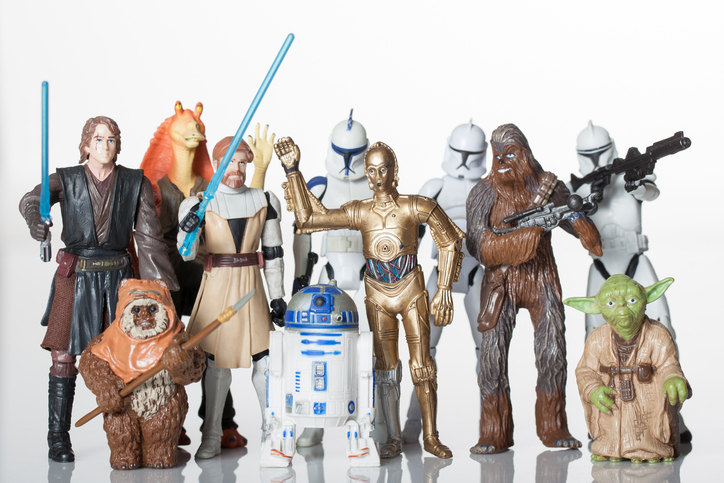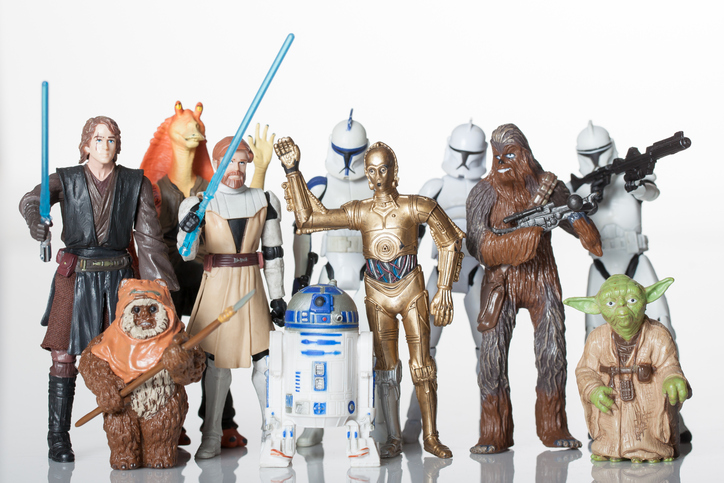Artists create things all the time. Here are some creators of well-known things who knew how to make a product people would love…but more about the business side than the people who negotiated their contracts. In short: They held on to the rights to something that only they knew would be worth a lot of money someday.
Toy Rights
After the huge commercial success of his 1973 film American Graffiti, George Lucas negotiated with Twentieth Century Fox to make his next movie, an ambitious “space western” called Star Wars. Science-fiction movies were a hard sell at the time, so Fox initially gave Lucas a relatively small budget of $8.25 million. To help keep costs down, Lucas offered to cut his director’s fee from $500,000 to $150,000…in exchange for the merchandising rights to Star Wars. Fox thought Lucas was doing them a favor, taking less money and all, and because movie tie-in merchandise wasn’t the billion-dollar industry it is today. And it’s a massive source of revenue today mainly because of Star Wars. It was the first movie to really make a truckload of money outside of the box office. In the year after Star Wars was released, about $100 million worth of Luke Skywalker action figures and toy Millennium Falcons, for example, were sold. Overall, Star Wars has moved $12 billion in merchandise. Overall value of Lucas taking a cut of the merchandise instead of a bigger director’s fee: about $3.5 billion.
Rerun Rights
In the early days of television, shows were mostly broadcast live, or recorded via primitive, not-long-lasting “kinescope” technology. In 1951, I Love Lucy costar and producer Desi Arnaz proposed to CBS that his show be recorded on 35 millimeter film. CBS said no at first, because they didn’t want to spend an extra $3,000 per episode (about $29,000 in today’s money, adjusted for inflation) on something that would only air once—theorizing that nobody would want to re-watch something they’d already seen. Arnaz helpfully offered to pay for the cost of the film, provided he then owned the films. CBS agreed. What did Arnaz do? He basically invented the incredibly lucrative concept of the TV rerun, while also owning all of the episodes one of the most popular—and re-run—TV shows ever.
Internet Rights
South Park hit TV in 1997—and it’s still running on Comedy Central today. In the early 2000s, creators Trey Parker and Matt Stone were renegotiating their contract with Comedy Central to keep the show going, discussing things like number of episodes and how much they’d get paid for things like DVD sales and South Park T-shirts. It’s not surprising that the cunning satirists seemed to know where the culture was headed before their corporate bosses did—which is why they asked to keep the “online rights” to South Park. Comedy Central allowed them to keep those, because in the early 2000s, there wasn’t much of an online marketplace for TV. But in the decade-plus since, streaming content has become big business, what with Netflix, Hulu, Amazon, and other sources for entertainment. Result: Parker and Stone had free reign not only to post South Park episodes on their own website, but they could negotiate with services to play South Park, entitling them to a much bigger cut of the profits than if Comedy Central alone had gotten them.









